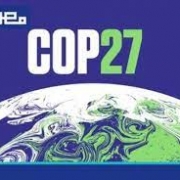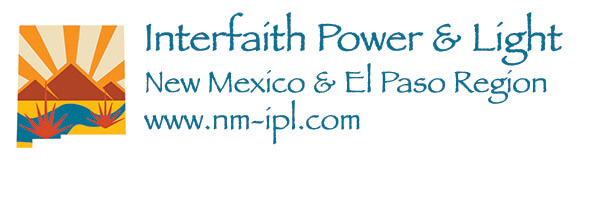UC Climate Action Network Shares Overview of First Week of COP 27
 There is no climate justice without human rights: We are of course operating at the COP in the political context, not just of the climate space but also the political situation in Egypt. A lot of work has gone into ensuring that CAN showed solidarity with the Egyptian movements. This has been extremely well received and appreciated by the rest of the movement.
There is no climate justice without human rights: We are of course operating at the COP in the political context, not just of the climate space but also the political situation in Egypt. A lot of work has gone into ensuring that CAN showed solidarity with the Egyptian movements. This has been extremely well received and appreciated by the rest of the movement.
Friday’s March: There was a cross-constituency march, representing not just environmental NGOs, but the women and gender constituency, trade unions, disability caucus and indigenous peoples caucus on Friday. It was a really amazing march around the blue zone (inside the security zone at the COP) considering the constraints here with inspiring speeches and a broad cross-section of the movement. There were many cameras out, so while sadly I don’t have any easily shareable photos, look for more soon.
 Loss and Damage: Loss and damage did end up on the agenda, which is a huge and hard fought step, but now we need to actually deliver on the agreement to create a loss and damage finance facility at this COP, with a plan to operationalize it in the near term (no later than 2 years).
Loss and Damage: Loss and damage did end up on the agenda, which is a huge and hard fought step, but now we need to actually deliver on the agreement to create a loss and damage finance facility at this COP, with a plan to operationalize it in the near term (no later than 2 years).
Developing countries have been really united in their call for the creation of this facility. Developed countries have been opposed, with the US being the loudest blocker. Secretary Kerry at a press conference on Saturday confirmed that the US is still opposed to the creation of a facility here, which resulted in a fossil from CAN. (The fossil is a tool CAN uses to call out any countries that do something we strongly oppose). Colleagues from other regions are running their own strategies to move their countries forward, with the EU being seen as particularly key. Advocates here are working to keep up the pressure on the US to agree to move forward with a facility.
Article 6 Markets and nonmarket mechanisms: These have proven to be somewhat contentious talks, with lots of brackets or options and very little agreed. There is a great deal of concern that countries could make too much of the information about what offsets are being sold or bought confidential information, which could undermine Paris Agreement by undermining the necessary basic levels of transparency.
The non-market mechanisms (article 6.8) has also been contentious. This mechanism would allow for a registry on a web-based platform of projects seeking support along with a matchmaking effort with entities (including but not exclusively governments) to provide support, but with no expectation of an offset in return. The US is objecting to the level of matchmaking in the current draft.
The Supervisory Body for 6.4 (voluntary markets) also put forward a very expansive definition of removals, which included nearly everything. It allowed for storage in geological formations, the land sector, oceans and products. There was also a major step back on human rights language from what had been agreed in Glasgow, and insufficient consideration of other issues. Civil society pushed back hard and most countries seem to agree this needs more work. We are hopeful this will be sent back to the Supervisory body.
Climate Finance: There are several strains of climate finance negotiations this year: reviewing progress towards the $100 billion goal (which is of course late), progress towards ensuring adaptation is receiving 50% public climate finance, and negotiations on what’s called the “New Collective Quantified Goal”. This goal, which is to be set by 2025 will essentially be the new goal to progress beyond the $100 billion (which was always arbitrary figure, not a needs based one). While no major outcomes were expected this year on this topic, negotiations have still been slow and frustratingly circular.
Adaptation: Key issues this year are agreeing on the Adaptation Global Goal. There are also discussions on the National Adaptation Plans (NAPs), which were called for under the Paris Agreement, and should be submitted asap. Developing countries however need support to develop them and actually implement them. There is some money for this at the Green Climate Fund, but not as much as what’s needed.
Mitigation Work Program: The Mitigation Work Program was mandated in Glasgow, with this year to develop what the program would consist of exactly. The draft text has some good aspects, but still lots of options where ministers will have to agree on the way forward. Key decisions include how long the work program will go. This initiative was pushed to increase ambition, but it should be a complement to the global stocktake.
What’s Next: Generally the first week of COP is the more technical negotiations. Now issues are being packaged and sent up to a more political level of decision making, essentially “sent to the ministers” for higher level negotiations between countries. Discussions continue largely at that level (with a few exceptions where technical work still continues) with the goal of finalizing agreements by Friday. I will send a mid-week update (hopefully) with an update on what we expect in the end game for this week and then a wrap up.
